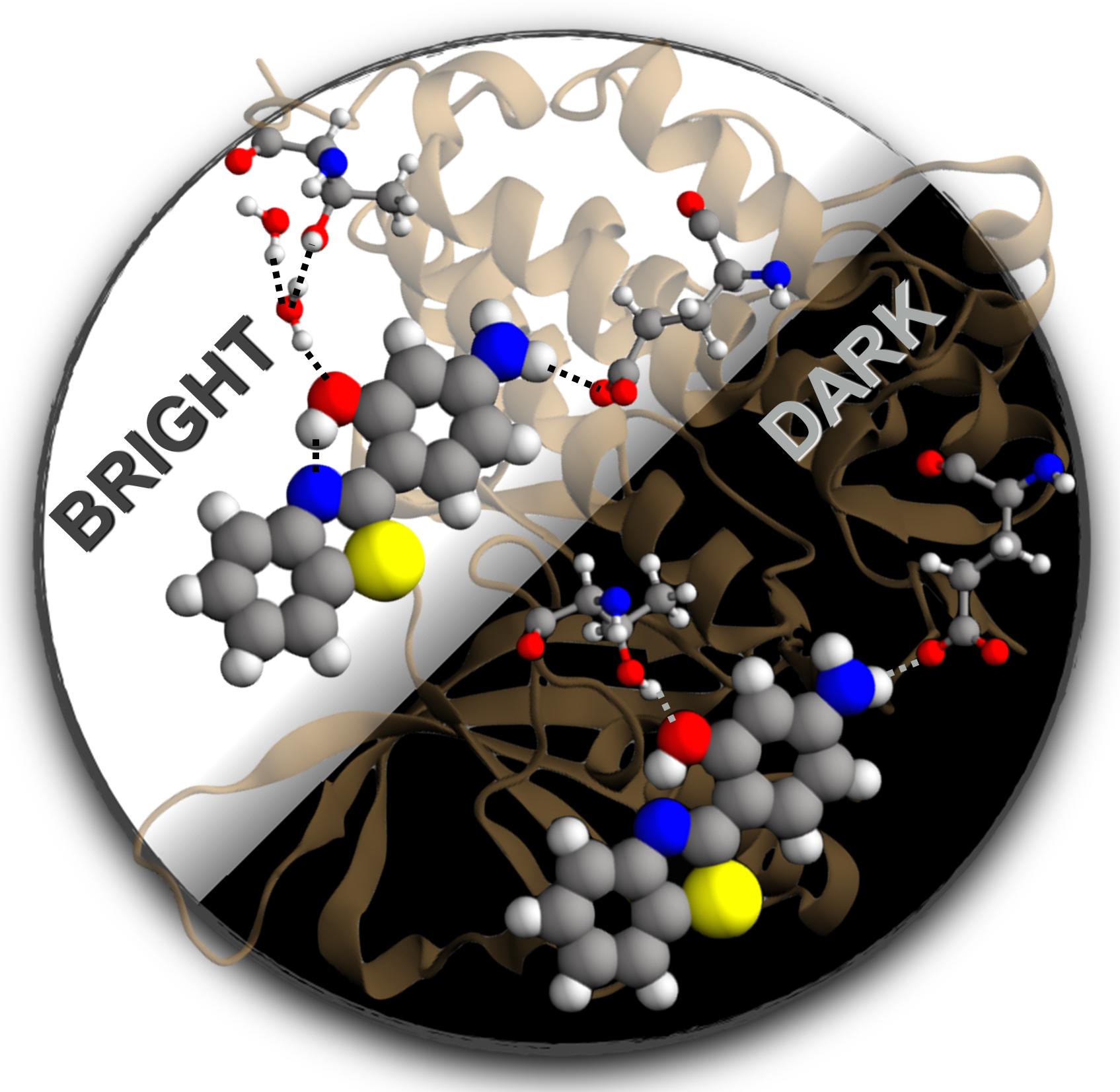Excited-state proton transfer may give rise to new diagnostic tools to follow the clinical evolution of cancer patients.
A number of phenylbenzothiazole (PBT) compounds, such as ABT, exhibit antitumor activity. This property relies on the docking of these molecules to tyrosine kinase (TK), enzymes that are usually over-expressed in several types of carcinomas.
Certain PBTs are also well-known for their very large Stokes shift caused by excited-state intramolecular proton transfer (ESIPT). This is the case, for instance, of HBT, which absorbs UVA and may have two-color fluorescence, depending on the tautomer emitting light. When proton transfer takes place, HBT has enol conformation and emits in the green. However, if the proton transfer is blocked, HBT has keto conformationn and emits in the violet.
Aiming at combining the tumor selectivity of ABT and the proton-transfer properties of HBT, we have theoretically designed and studied HABT.
Our hypothesis is that the proportions and intensities of violet and green emissions from HABT depend on the protein active site conformation, which modulates the rates of proton transfer, and of radiative and nonradiative decays. Thus, changes in the fluorescence spectrum of HABT bound to TK could be the basis for a new method to detect mutations in cancer cells, usually associated to development of drug resistance.
Computationally, we first run a long ground-state molecular dynamics for HBT-TK using QM/MM. A statistical analysis revealed that—depending on the interactions between HABT, water, and the T766 residue in the protein—three classes of conformers are formed in room temperature.
Then, for each type of conformer, we computed the excited state potential energy profile, from absorption (UVA), through keto and enol minima (violet and green emissions), till the intersection with the ground state (dark internal conversion). The analysis of the reaction barriers along these pathways showed that each conformer has a different fate in terms of emission color and intensity.
These results show how proton-transfer tuning may enable PBT derivatives to serve as fluorescent probes of mutations in TK, as any changes in the protein active site should result in a different conformational distribution and, therefore, a different emission spectrum.
If this computational finding is proven to be true experimentally, it may give rise to new diagnostic tools to follow the clinical evolution of cancer patients. For instance, if in a periodic analysis of the tumor tissue, PBT showed a new spectroscopic signature, it would indicate that mutations occurred. And to know that they happened might help doctors react faster to the potential development of drug resistance.
This work resulted from the collaboration between researchers from the Max-Planck-Intitut für Kohlenforschung (myself included), from the Federal University of Lavras (Brazil), and from the École Normale Supérieure (Paris). It has been recently published in the ChemPhysChem [1].
Reference
[1] Daiana T. Mancini, Kakali Sen, Mario Barbatti, Walter Thiel, Teodorico C. Ramalho Excited-State Proton Transfer Can Tune the Color of Protein Fluorescent Markers, ChemPhysChem, doi:10.1002/cphc.201500744 (2015). doi:10.1002/cphc.201500744
You can also watch the excited-state proton transfer in HBT (in the gas phase) the movie below.

